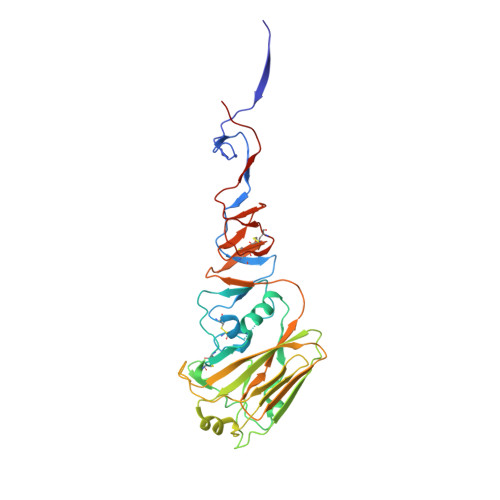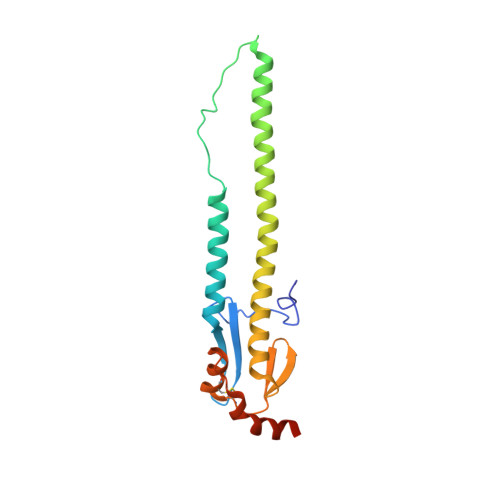Functional Balance of the Hemagglutinin and Neuraminidase Activities Accompanies the Emergence of the 2009 H1N1 Influenza Pandemic.
Xu, R., Zhu, X., McBride, R., Nycholat, C.M., Yu, W., Paulson, J.C., Wilson, I.A.(2012) J Virol 86: 9221-9232
- PubMed: 22718832
- DOI: https://doi.org/10.1128/JVI.00697-12
- Primary Citation of Related Structures:
4F3Z - PubMed Abstract:
The 2009 H1N1 influenza pandemic is the first human pandemic in decades and was of swine origin. Although swine are believed to be an intermediate host in the emergence of new human influenza viruses, there is still little known about the host barriers that keep swine influenza viruses from entering the human population. We surveyed swine progenitors and human viruses from the 2009 pandemic and measured the activities of the hemagglutinin (HA) and neuraminidase (NA), which are the two viral surface proteins that interact with host glycan receptors. A functional balance of these two activities (HA binding and NA cleavage) is found in human viruses but not in the swine progenitors. The human 2009 H1N1 pandemic virus exhibited both low HA avidity for glycan receptors as a result of mutations near the receptor binding site and weak NA enzymatic activity. Thus, a functional match between the hemagglutinin and neuraminidase appears to be necessary for efficient transmission between humans and may be an indicator of the pandemic potential of zoonotic viruses.
Organizational Affiliation:
Department of Molecular Biology, Scripps Research Institute, La Jolla, California, USA.
















